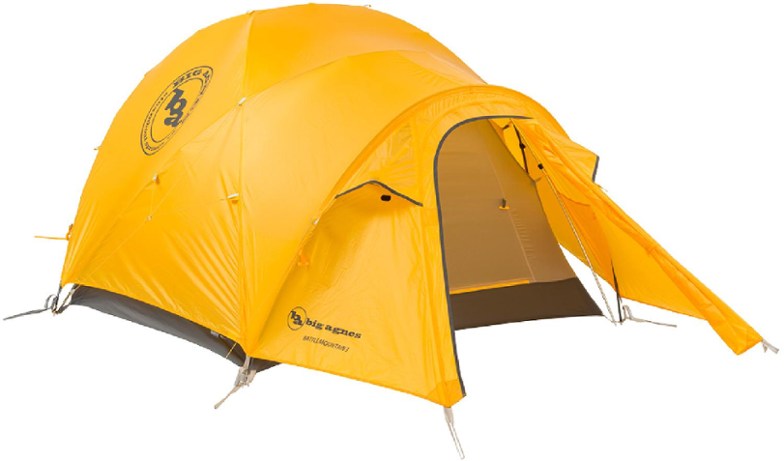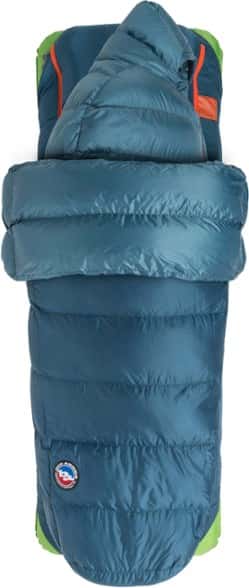Camping in freezing temperatures without a heater might sound impossible, but it’s entirely doable. There are safe, creative ways to stay warm in your tentnthat don’t rely on electricity. By using techniques like tent insulation and body heat retention, you can camp comfortably in the cold without risking your safety.
How to Heat a Tent Without Electricity?
To heat a tent without electricity, you can use portable gas heaters, hot water bottles, or tent-safe wood stoves. Insulated sleeping pads and thermal blankets can help retain body heat, while heat packs offer a quick, temporary warmth. Additionally, placing rocks heated by a campfire inside the tent or using candle lanterns provides gentle heat in small, ventilated spaces. Always make sure you have good ventilation to avoid carbon monoxide buildup when using any fuel-based heat source.
How to Insulate Your Tent for Winter Camping
Choose a 4-season, double-wall tent to retain heat. A 4-season tent is crucial for staying warm in cold weather. The tent has two walls—an inner tent body and an exterior rainfly. The inner tent is breathable for ventilation, while the outer rainfly is waterproof to block snow and wind. The tent protects your against water and keep the temperature stable inside the tent.

Popular 4-season tents
- Big Agnes Battle Mountain Mountaineering 4-Season Tent
- REI Co-op Arete ASL 2, 4-Season Tent (free of flame retardants)
- Mountain Hardwear Trango, 4-Season Tent (free of flame retardants)
How to Prevent Cold From the Ground in a Tent
Use a footprint to block moisture and cold from the ground. A tent footprint acts as a protective barrier between the tent floor and the cold, damp ground. This waterproof groundsheet sits under your tent and also protects the tent floor from rips and tears. Footprints are made of polyethylene, oxford nylon, or polyester.

Popular Tent Footprints
- REI Co-op Arete ASL 2 Footprint (free of flame retardants)
- Mountain Hardwear Trango 2 Footprint (free of flame retardants)
- Big Agnes Battle Mountain 3 Footprint (free of flame retardants)
- Mountain Hardwear Outpost 2 Footprint (free of flame retardants)
How to Seal Your Tent Against Cold Weather
Add a snow skirt to keep out snow, rain, and wind. These extend from the bottom edge of the tent and allow you to pile snow on top to create a windproof barrier, sealing out cold air and stabilizing the tent in windy conditions.
How to Stay Warm in a Tent Without a Heater
Use a Mylar and wool blanket to build body heat. Combining a wool blanket with a Mylar blanket helps trap heat. Mylar reflects heat, while wool naturally insulates. First, wrap yourself in a wool blanket, followed by a mylar blanket to keep you warmer for longer.
Popular Mylar + Wool Blankets
- SOL Emergency Mylar Blanket
- All Season Mylar Blanket
- Rumpl Merino Softwool Blankets
- Pendleton Wool Blankets
Best Sleeping Bags for Winter Camping

Use a winter sleeping bag rated for sub-zero temperatures. Invest in a winter sleeping bag rated for temperatures as low as -30°F to stay warmth in extreme conditions.
- Pajak Sport Radical Sleeping Bag – Temperature Rated: -99.4° Fahrenheit
- Marmot Warmcube Expedition Sleeping Bag – Temperature Rated -30° Fahrenheit
- NEMO Sonic Sleeping Bag – Temperature Rated -20° Fahrenheit
- Big Agnes Lost Ranger 3N1 Sleeping Bag (no flame retardants) – Temperature Rated 15° Fahrenheit
How to Increase Warmth in a Sleeping Bag
Add a sleeping bag liner for extra insulation. A sleeping bag liner can elevate the internal temperature of your sleeping bag by 20-25°F. These liners are lightweight and easy to carry, making them an ideal addition to any cold-weather camping setup.
Popular Sleeping Bags Liners
- Sea to Summit Thermolite Reactor Extreme Sleeping Bag Liner
- Cocoon COOLMAX Mummy Liner
- ALPS Mountaineering Razor Fleece Sleeping Bag Liner
- The North Face Wasatch 0F Synthetic Sleeping Bag
- Mountain Hardwear Phantom 15 Sleeping Bag (free of flame retardants)
Wearable Sleeping Bags for Mobility and Warmth
Use a wearable sleeping bag. A wearable sleeping bag are designed like ponchos, with arm, leg, and head openings, so that you can stay warm without sacrificing mobility—perfect for cold-weather camping.
Popular Wearable Sleeping Bags
How to Keep Your Hands and Feet Warm in a Tent
Use heated socks and gloves to warm extremities. Cold hands and feet are common in winter camping. Heated socks and gloves keep your extremities warm and help maintain overall body heat. Opt for rechargeable, battery-powered models for extended use.
- Hotronic XLP 1P BT Surround Comfort Heat Sock Set
- Therm-ic Sock Set V2 Uni 1200
- Outdoor Research Gripper Heated Sensor Gloves
- Seirus Heat Touch Hellfire Heated Mitten
Additional Tips for Heating a Tent Without Electricity
Heat rocks by the fire: Place heated rocks inside your tent (wrapped in a cloth) to provide a natural heat source that lasts for hours.
Use hot water bottles: Fill a hot water bottle and place it at the bottom of your sleeping bag to warm your feet throughout the night.
- Green Camping Guide: How To Make Your Outdoor Trip Eco-Conscious
- The Ultimate Guide to Backpacking
- How to Build a Solar Camping Heater: A Safe and Eco-Friendly Way to Stay Warm Outdoors
- A Guide to Eco-Friendly Campsites in the US
- Best High-Tech Campgrounds in the US
FAQs
How can I heat my tent without electricity?
You can heat a tent without electricity using methods like hot water bottles, heated rocks, and thermal blankets. Additionally, using a 4-season tent and insulating your sleeping setup with sleeping pads and liners can help retain body heat.
Are hot rocks safe to use for heating a tent?
Yes, heated rocks can be used, but you need to be careful. Heat rocks by a campfire, then place them in a metal container or wrap them in cloth before bringing them into your tent. They provide warmth for several hours but cool down quickly, so they’re more of a temporary solution(
What is the best way to insulate a tent in winter?
To insulate a tent, use foam mats or tent carpets on the floor, hang thermal blankets on the walls, and set up your tent in a sheltered location to block wind. You can also use a tent footprint to block cold air from seeping in from the ground
How do you stay warm while sleeping in a tent?
Wear thermal layers, use wool socks, and consider a sleeping bag liner for added warmth. Mylar blankets can help reflect your body heat back to you, and make sure your sleeping bag is rated for cold temperatures(
